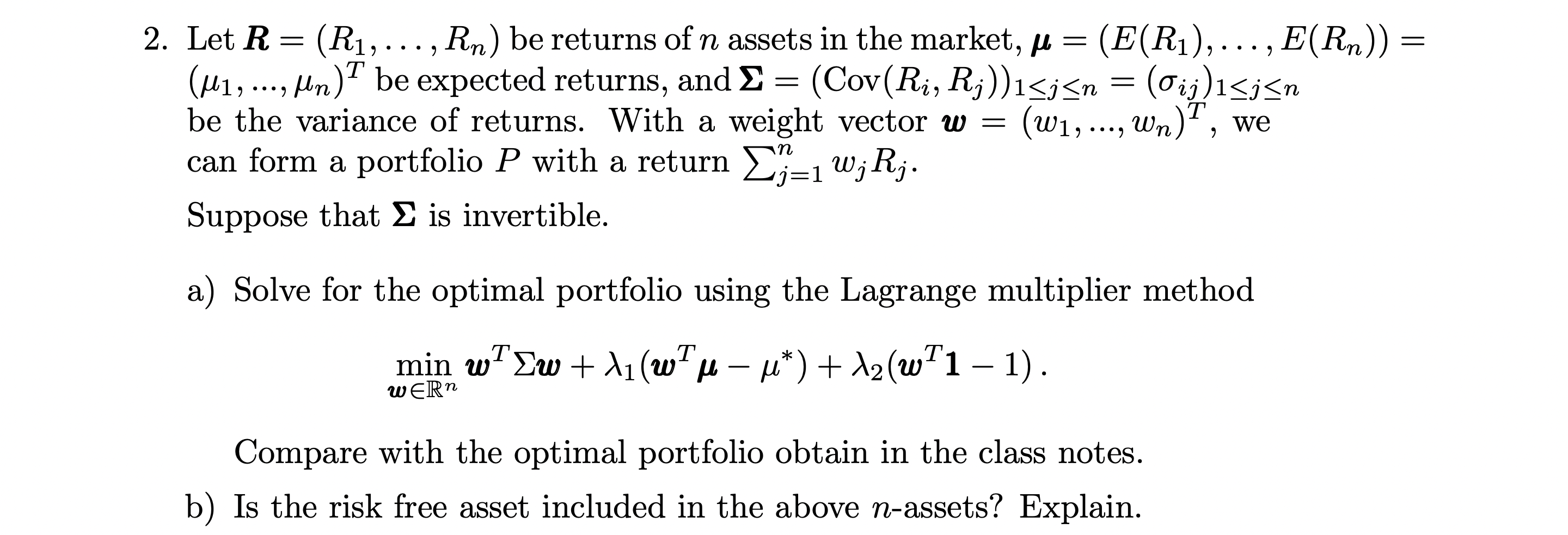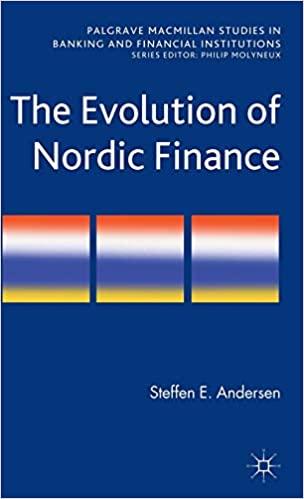Answered step by step
Verified Expert Solution
Question
1 Approved Answer
2. Let R=(R1,,Rn) be returns of n assets in the market, =(E(R1),,E(Rn))= (1,,n)T be expected returns, and =(Cov(Ri,Rj))1jn=(ij)1jn be the variance of returns. With a

Step by Step Solution
There are 3 Steps involved in it
Step: 1

Get Instant Access to Expert-Tailored Solutions
See step-by-step solutions with expert insights and AI powered tools for academic success
Step: 2

Step: 3

Ace Your Homework with AI
Get the answers you need in no time with our AI-driven, step-by-step assistance
Get Started


